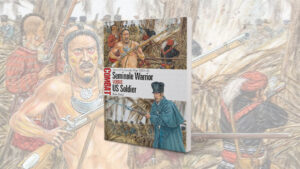There was a time, a moment, brief though it was, when, thanks to a World War I veteran’s exposure to phosgene gas, the two opposing catchers in a major league baseball game were calling the balls and strikes thrown by their own pitchers. By mutual agreement, too!
It happened one day during the Depression, Chicago White Sox vs. Detroit Tigers, at Chicago’s Comiskey Park. Birdie Tebbetts was catching for Detroit, and Mike Tresh was behind the plate for Chicago.
Standing right behind each as the innings wore on was Umpire Emmett Ormsby, father of “about 14 kids,” according to the late Tebbetts.
In those days, adds the book Birdie: Confessions of a Baseball Nomad, by Birdie Tebbetts with James Morrison, “anybody that had a job was lucky to have a job, and an umpire in the American League, if he was OK, would have take-home pay of $250 or maybe $300 a month.”
Keep in mind that was only during the baseball season. “So, to keep 14 kids in feed,” Tebbetts wrote, “Emmett would buy everything by the case or even wholesale when he could do it.”
But what about those ball-and-strike calls made by the catchers instead of being pronounced by the umpire? Well Ormsby, it seems, was a World War I veteran who had “inhaled a whiff of phosgene gas, which seared the lining of his lungs.” By the 1930s, “that often left him gasping and disoriented.”
On the day of the Sox-Tigers game at Comiskey, Birdie Tebbetts related:
[A] guy hit a ball up the right-field line, and Emmett ran up the line to call it. When he came back he said to me, “Birdie, I’m getting very, very dizzy from the Army thing, and I just don’t know what to do about it. I can’t see but I don’t want to quit. I’m afraid if I do I’ll lose my job.”
And I said, “Are you all right? Are you going to be able to be steady on your feet, Emmett?”
He said he would be ok so I said, “Well, listen. When I raise my right hand it’s a strike, and when I raise my glove it’s a ball.
And before he could answer I got down and called for a pitch. When the pitch came in, I raised my right hand and he called it a strike. On the next one I raised my glove hand, and it was a ball. And we went through the hitters of the inning that way.
With the White Sox retired for the inning, however, here came their catcher, Mike Tresh, to take over from Birdie Tebbetts. How would Emmett Ormsby fare now?
No problem, it seems. Those were the good old days, remember? In fact, Tebbetts was moved to say—in his book— that Ormsby was “an awfully nice man,” that modern-day umpires wouldn’t “understand what I’m talking about.”
He added, “[N]or do I think that the players of today would have the same kind of relationship we did in the thirties and forties before the war.”
So Tebbetts thought nothing of asking Tresh to join in the charade aimed at preserving Ormsby’s reputation and job. In fact, he said, Tresh “was a real dear friend of mine because we had been in the Detroit system together.”
The conversation sealing their agreement was short and to the point: “Mike, Emmett is sick and he can’t see. If you raise your right hand it’s a strike, and if you raise your glove it’s a ball. And he looked and nodded and said OK.”
Tebbetts then watched as his opposing number “went through the raising of the hand and the raising of the glove…for a couple of more hitters.”
At that point, Mike Tresh “stopped raising his hand and looked in to me and nodded.”
Tebbetts got the message. Emmett Ormsby’s sight had come back. The umpire could take over again and call his own balls and strikes…thanks to two opposing catchers who successfully had conspired to get their umpire out of a scrape.
“Years later,” added Tebbetts, “I told that story to Dick Young of the New York Daily News. He printed it, and a lot of skeptics said such a thing couldn’t happen. But let me tell you that under the system that existed in those days…it not only could happen, it did happen.”
Originally published in the November 2006 issue of Military History. To subscribe, click here.




